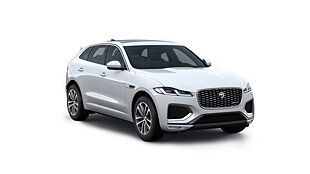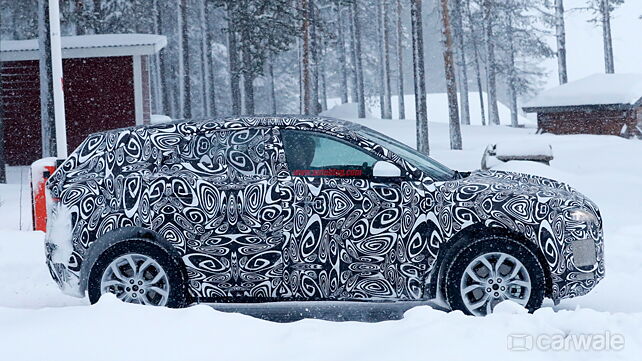
What you see in the pictures is the Jaguar E-Pace spotted testing in cold weather conditions.
By the looks of it, the E-Pace will be decidedly smaller than the Jaguar F-Pace. And it makes sense now, as the brand had earlier revealed its intentions for an SUV of this size; one that’s shared by compact luxury crossovers like the BMW X1 and Audi’s Q3.
On closer inspection, one will notice that the bonnet seems too short for a longitudinal inline four cylinder or a V6 to be a viable fit. Now, if the E-Pace is to use a transverse mounted engine, it will mean that it doesn't use the same platform which other rear wheel drive based Jaguar models have. So, in other words, Jaguar (known for rear wheel drive cars) would have to pull this one off by deviating from their norm and considering a transverse, front wheel drive vehicle.
Let’s delve deeper. Jaguar had earlier disclosed that they doubted if their existing platforms could be engineered (scaled down) for such a compact crossover. So ideally, it could only mean that they had to explore the Range Rover Evoque platform; a compact SUV platform which houses a transverse engine layout. If this is true, then the brand has a few engines from the Evoque stable to power this crossover, and could also come up with an electrified version for the line-up eventually.
There’s no confirmation as to when the Jaguar E-Pace will make it to the international market, however, sources suggest an early 2018 debut at an auto show. Stay tuned.
Source: autoblog

![Jaguar F-Pace [2016-2021] Image Jaguar F-Pace [2016-2021] Image](https://imgd.aeplcdn.com/272x153/cw/ec/20222/Jaguar-FPace-Right-Front-Three-Quarter-81369.jpg?wm=0&q=80)







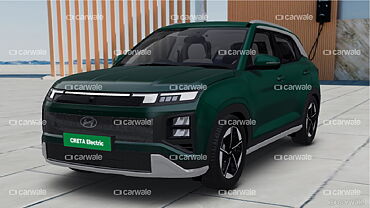


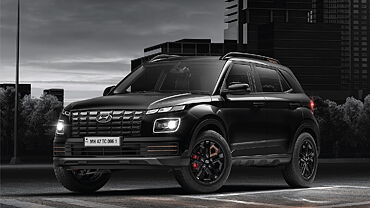

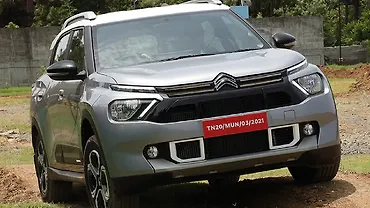
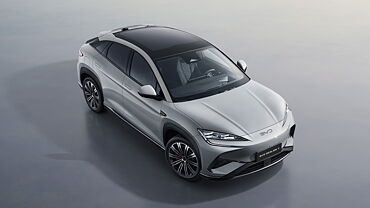
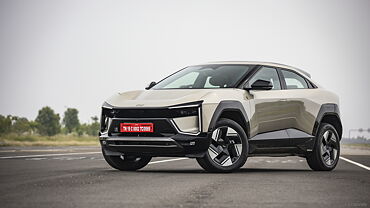
![Jaguar F-Pace [2016-2021] Right Front Three Quarter Jaguar F-Pace [2016-2021] Right Front Three Quarter](https://imgd.aeplcdn.com/199x112/cw/ec/20222/Jaguar-FPace-Right-Front-Three-Quarter-81369.jpg?v=201711021421&q=80)
![Jaguar F-Pace [2016-2021] Right Front Three Quarter Jaguar F-Pace [2016-2021] Right Front Three Quarter](https://imgd.aeplcdn.com/199x112/cw/ec/20222/Jaguar-F-Pace-Right-Front-Three-Quarter-57817.jpg?v=201711021421&q=80)
![Jaguar F-Pace [2016-2021] Right Rear Three Quarter Jaguar F-Pace [2016-2021] Right Rear Three Quarter](https://imgd.aeplcdn.com/199x112/cw/ec/20222/Jaguar-FPace-Right-Rear-Three-Quarter-64792.jpg?v=201711021421&q=80)
![Jaguar F-Pace [2016-2021] Interior Jaguar F-Pace [2016-2021] Interior](https://imgd.aeplcdn.com/199x112/cw/ec/20222/Jaguar-FPace-Interior-64793.jpg?v=201711021421&q=80)
![Jaguar F-Pace [2016-2021] Dashboard Jaguar F-Pace [2016-2021] Dashboard](https://imgd.aeplcdn.com/468x263/cw/ec/33384/Jaguar-FPace-Dashboard-121084.jpg?wm=1&q=80)


























